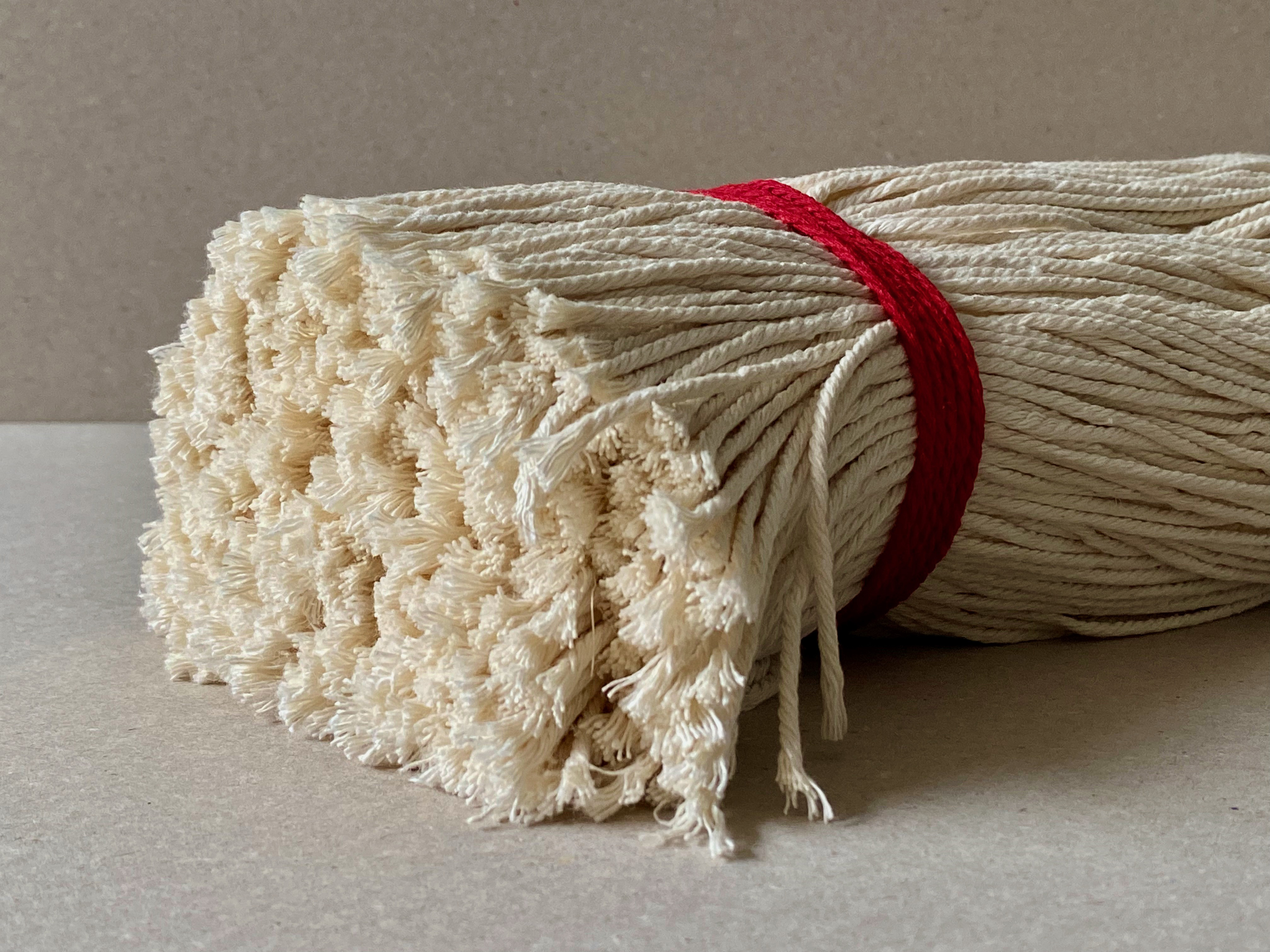Via Crucis (Misericordia)
2021
956 lengths of cord; red binding cord
During my AHRC Research Fellowship at the Ruskin, I read a lot on ritual and ceremonial objects and how, in some cases, the object might be imbued with certain powers, which we might consider religious or magical. I was interested in the fascination which the Surrealists had with African objects — many contributors to the Surrealist movement in Paris were anthropologists — and how this affected their making of, or alteration of, sculptural objects. My research over later years also considered these in relation to the material culture of Christianity, the Host used in Holy Communion, for example, or relics which seem a form of confirmation of an act or that someone, or something, has been present. Despite the ornate cases in which many such relics are now held, the objects themselves are extremely modest: a fragment of bone; a splinter of wood; a scrap of fabric. This work was made to possess a similar modesty, while opening itself up to the working of belief, and the identification with something far larger than oneself.
This small sculptural work consists of a bundle of white cords which have been laid out and bound together. Each cord is the length of my stride, and their number will approximate the number of steps it would take me to walk the Via Dolorosa in Jerusalem, the route taken by Jesus to the site of his crucifixion; the resultant work thereby acts as both a form of document, and a devotional object.
This work was created for ‘The Feuilleton: I Will Bear Witness’, Spoleto, Italy, curated by Jo Melvin.
2021
956 lengths of cord; red binding cord
During my AHRC Research Fellowship at the Ruskin, I read a lot on ritual and ceremonial objects and how, in some cases, the object might be imbued with certain powers, which we might consider religious or magical. I was interested in the fascination which the Surrealists had with African objects — many contributors to the Surrealist movement in Paris were anthropologists — and how this affected their making of, or alteration of, sculptural objects. My research over later years also considered these in relation to the material culture of Christianity, the Host used in Holy Communion, for example, or relics which seem a form of confirmation of an act or that someone, or something, has been present. Despite the ornate cases in which many such relics are now held, the objects themselves are extremely modest: a fragment of bone; a splinter of wood; a scrap of fabric. This work was made to possess a similar modesty, while opening itself up to the working of belief, and the identification with something far larger than oneself.
This small sculptural work consists of a bundle of white cords which have been laid out and bound together. Each cord is the length of my stride, and their number will approximate the number of steps it would take me to walk the Via Dolorosa in Jerusalem, the route taken by Jesus to the site of his crucifixion; the resultant work thereby acts as both a form of document, and a devotional object.
This work was created for ‘The Feuilleton: I Will Bear Witness’, Spoleto, Italy, curated by Jo Melvin.

